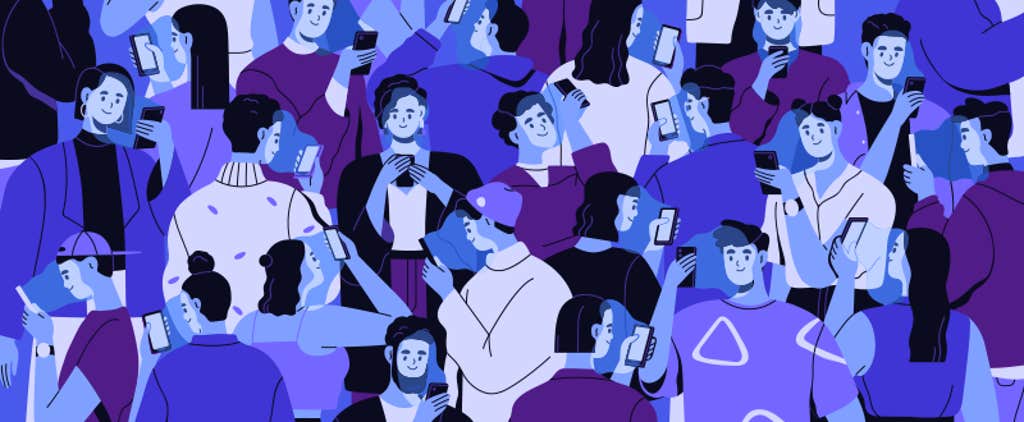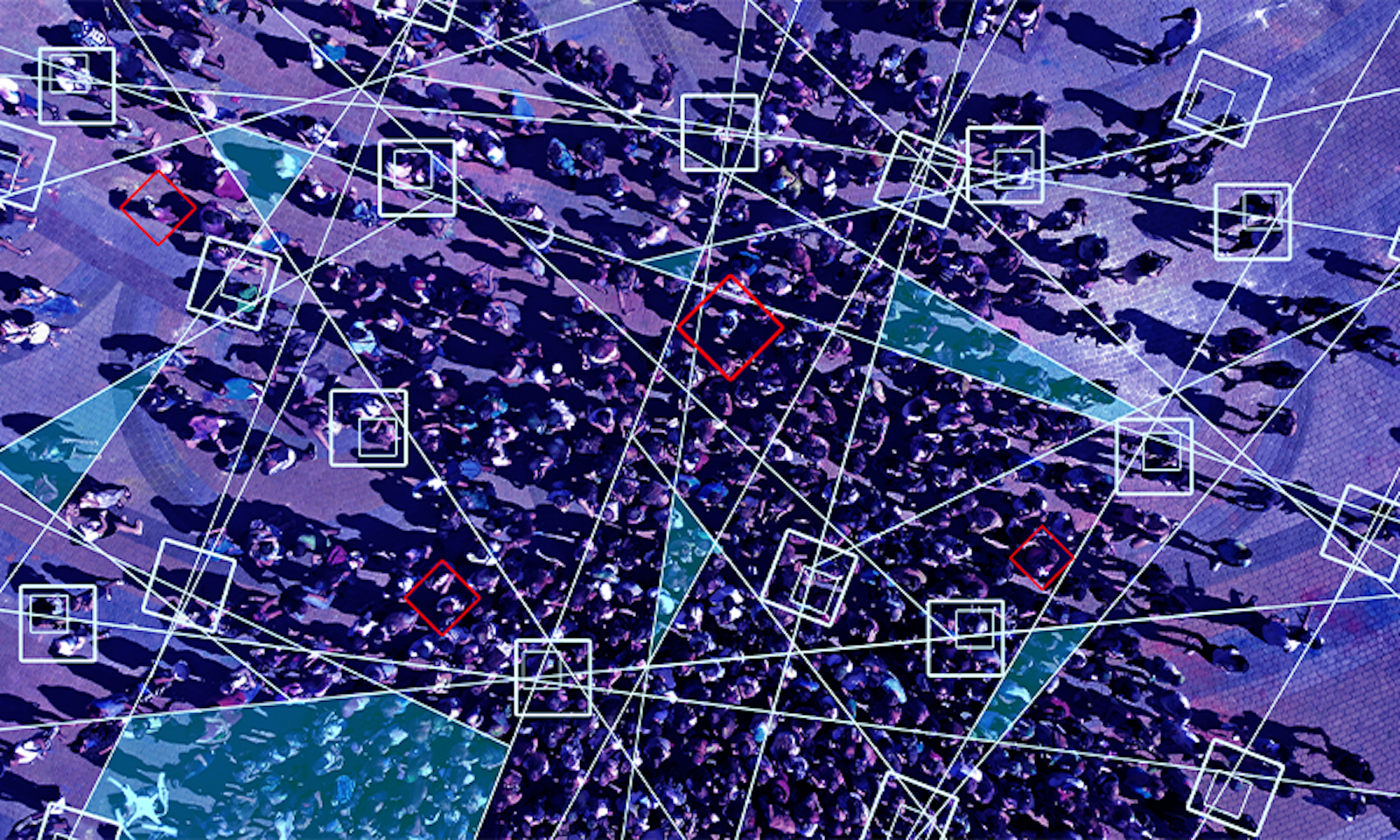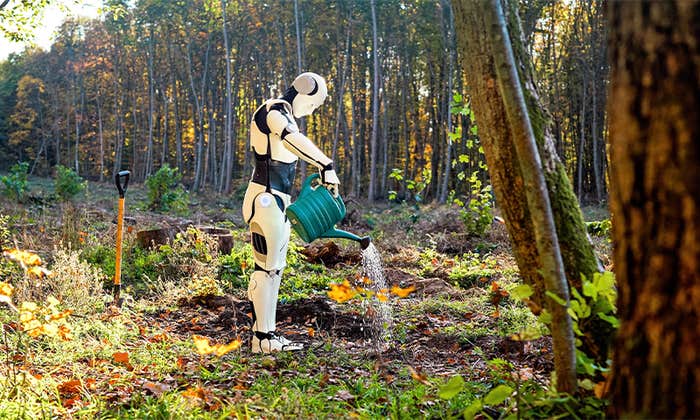In October 2022, 159 people died as crowd pressure caused a human pile-up in the Itaewon district of Seoul, South Korea. The victims were among an estimated 100,000 people celebrating Halloween in an area known for its active nightlife and narrow streets. With a tightly packed crowd, it would have taken only a single incident, such as a person stumbling, to initiate instability. The resulting wave of pressure quickly spread in a sloping alley some 12 feet wide, and people were crushed by the unrelenting force of others in the crowd.
This catastrophe was a national tragedy in South Korea, but it is not the largest such event. Documented fatal crushes stretch back through history. In 1896, a rush during a festival celebrating the coronation of Russian emperor Nicholas II killed more than 1,280 people. And in 2015, a crowd crush among 2 million Muslims attending the annual hajj to Mecca in Saudi Arabia left more than 2,000 people dead. In these cases, people panicked as they were squeezed by the crowd and could not escape. Though rare, these events are devastating and seem like they should be preventable—especially today.
When a disruption is coupled with high density, the results can quickly turn deadly.
The complex field of crowd science has long been working to understand how throngs can turn dangerous. It has borrowed from psychology and epidemiology, and now is also incorporating complex systems theory, physics, and physiology, combined with plentiful empirical data coupled with computer modeling. Scientists have even started turning their eyes toward the dangerous dynamics of virtual crowds.
We all have something to gain from this gathering field of science, because whether at a sports match, show, busy market, rush-hour metro, or in an online community, most of us find ourselves, at times, in a crowd.
In physics, the closer two electrons get, the more strongly they repel each other—a phenomenon known as a repulsive force. With this force in play, they can never collide. Similarly, in most circumstances, people operate with a “social force,” avoiding collision with one another, for example, on a busy sidewalk.
Unlike electrons, people also react intelligently to their neighbors’ actions, and these reactions can result in collective crowd behavior. A team of United States-based researchers studied videos of moving crowds and confirmed, in a 2014 paper, perhaps unsurprisingly, that people alter their paths to avoid collisions over a range of walking speeds.1 But that data led to a new empirical and universal law of repulsion between two people, which stated that people altered their paths based not on distance—like electrons—but instead on time until collision. When this law was applied to computer-simulated crowds, it predicted actual behavior. For instance, crowd members heading toward different exits in a stadium minimize disruptive interactions by spontaneously forming themselves into unidirectional lanes.

These lanes are an example of an emergent property, when a group of interacting entities shows behavior that its separate components do not exhibit. In 2021, a team of researchers based in Japan confirmed that the anticipation of future outcomes is important for how a crowd organizes itself.2 The researchers set in motion two crowds of 27 members each to meet while walking in opposite directions. In repeated trials, each group neatly formed itself into unidirectional lanes. That intelligent organization changed, however, when just three members of one group were given mobile phones and told to type on them to solve math problems while walking. The distraction disrupted the formation of lanes for both crowds, with higher probabilities of colliding. This shows how even minor disturbances can alter crowd behavior and underlines the tight link between individual behavior and the physical actions of a crowd.
And when a disruption is coupled with high density, the results can quickly turn deadly.
Keith Still, a crowd scientist at the University of Suffolk in the United Kingdom, defines his work as the study of crowd densities above about one person per square meter (11 square feet). Below that value, pedestrians can freely move to avoid collisions or adjust to changing conditions. At two people per square meter, walking speeds are reduced. At four people per square meter, involuntary contact occurs; at six to seven people per square meter (the equivalent of 1,600 to 1,800 people crammed onto a tennis court), the close contact makes motion difficult; and at 10 people per square meter, movement is virtually impossible. In a playful video clip, Still illustrates how just six men—held within a rope loop of one square meter—overlap and lurch forward only awkwardly, even as they calmly try to synchronize their steps. At these critically high densities, an uncoordinated crowd in motion can hardly proceed and begins piling up; in a static crowd, one person in distress can cause a crush.
Knowing what level of crowd density is dangerous helps authorities handle large-scale public events. Still’s work was employed, for example, to assess crowd safety in planning for the U.K.’s royal wedding of Prince William and Kate Middleton in 2011. In real-time, public safety organizations can also now use this sort of information to monitor crowds with video cameras backed up by computer or AI analysis to identify areas of developing concern. And researchers can gather video, along with digital data from smartphones and wifi networks, to better understand crowd dynamics post hoc—even when things go well.
The study of how crowds move has long borrowed from physical theory, in particular from fluid dynamics, viewing a dense mass of people as a continuous medium. The behavior of a continuous fluid medium—a liquid or gas—depends on the properties and interactions of the individual particles that make it up. In water, the basic particles are H2O molecules; in a crowd, the “particles” are people, whose interactions determine overall crowd behavior.
Contagion can generate a common emotional state such as fear or anger that grips a crowd.
But when the density becomes very high and individual motion is highly restricted, a crowd can behave more like so-called “soft matter.” This is any “squishable” material, such as butter or Silly Putty, that can be easily deformed and displays both solid and liquid characteristics. Soft matter research is a developing area in physics and is providing a new physical tool to study crowds in the dangerous realm of extremely high densities. Knowing that an ultra-dense crowd does not flow freely like water but moves more like kneaded clay helps explain the special conditions that individual crowd members would experience.
That could well have been the case in the Seoul tragedy. We do not know the precise density the crowd reached before its internal pressure became lethal, but the devastation seen in the aftermath shows that the density was far into the danger zone defined by Still. This would have utterly precluded any free motion or “social force” avoidance maneuvers based on physical repulsive forces and fluid dynamics. Instead, the crowd likely behaved according to the physical laws of soft matter and developed strong internal forces that tragically crushed individuals caught up within its pressure points. With more data, the conditions that produced those forces could have been better understood to help in future crowd control.
But crowd behavior isn’t just about physics. There are myriad psychological phenomena at work—especially when things start to go wrong.
A flow of sentiment becomes a powerful force in dictating a crowd’s behavior, as Gustave Le Bon proposed in 1896 in The Crowd: A Study of the Popular Mind. Le Bon introduced the idea that emotional states (and cognitive ones) can be infectious, giving rise to the concept of emotional contagion. In this process, a person takes in an emotion expressed by someone else, then expresses that feeling, which affects others. This soon generates a common emotional state such as fear or anger that grips a crowd.
In 2015, Funda Durupinar at Bilkent University in Turkey and colleagues introduced a useful model for this transference in a crowd. They took an epidemiological approach where, like the germs from an infectious disease, people received doses of emotion from those already infected, and became themselves infected if the total dose exceeds a certain threshold (as determined by typical psychological profiles).3
Building on that work, an international team of researchers, in 2021, considered the psychological, physical, and physiological factors involved as people panic when they become aware of a threat, then try to move away from it.4 The researchers used known theory and data to simulate on a computer the relevant characteristics of the members of a crowd fleeing the scene of a threat. The first step was to determine the bodily effort as each person ran, based on typical body weights and speeds. From the physiological energy expended, the researchers calculated the heart rate, which measures the degree of fear and the continuing emotional contagion triggered by the person running away. Combining all these effects, the researchers were able to calculate the trajectory and position for each person, spreading more panic as they fled.
As this computer simulation unfolded, it gave realistic results. A virtual person near the danger zone soon panics and tries to get away as quickly as they can. As emotional contagion spreads, those farther away also become fearful and try to escape. The researchers then compared the simulation to videos of experiments where real people reacted to simulated dangers, and to videos of real crowds responding to real emergencies: a suspected bomb in the Shanghai subway system and a shooting outside the British Parliament. In all cases, the model results were reasonably similar to the observed behaviors, more so than other models that did not include all three factors of the psychological, physical, and physiological, underscoring the complex, interdisciplinary, and ever-evolving nature of crowd science.

Results like these are beginning to elucidate how physical crowds operate in daily life, or under panic conditions. But today, many interactions occur not in real-world crowds but in virtual ones. Although the dynamics are different than in a physical crowd, scientists are still finding lessons from physics to try to better understand the risks to individuals from these virtual mobs.
It turns out that masses of physically separated people have displayed their power for centuries, as Charles Mackay wrote in his 1852 Extraordinary Popular Delusions and the Madness of Crowds. He detailed how dispersed throngs of people can get swept toward a common idea, such as the speculative tulip mania in the 1630s, or toward a common action, as in the Crusades of the Middle Ages. Now, online connections enable the rapid transfer of feelings, opinions, and information—whether true or false—among the members of virtual crowds, vastly accelerating crowd dynamics in the ether and sometimes producing very real effects in real life.
Virtual crowds may draw individuals toward a black hole of extreme political and social opinions. Studies show that the rhetoric of these groups can boil over from online discourse to encourage real-world violence, and the interconnections they provide can support the organization of group actions like the deadly riot at the U.S. Capitol on Jan. 6, 2021. The risk that online-fomented events like these will continue to threaten people and political stability in the real world make it important to discover how online crowds perpetuate extreme opinions that may have outsize impacts.
One early analysis shows the central importance of connectivity in encouraging the growth of extremism within virtual crowds. The work was published in 2015 by researchers in the U.S., Brazil, and Israel.5 Assessing public opinion across the globe about religion, politics, climate change, abortion, and other hot-button issues, they noted a decrease in moderate voices with “the rising of extreme opinions … the opinion or attitude of an initially small group could become the rule.” To study this premise, the researchers examined many hundreds of recent surveys in various countries asking about these divisive issues.
The survey responses were sorted either as extremely in favor or against an opinion—or moderately in favor or against it. Tabulating the proportion of people with extreme views, the researchers found a surprise. In many of the surveys, across a range of issues, the fraction of respondents with extreme views was in a small minority and proportional to the total number of responders. But for most surveys where the fraction of extreme views exceeded 20 percent of respondents, the number of extremists was found to be up to five times larger than a linear relationship would predict. This nonlinear behavior means that above 20 percent extremism, extremists may disproportionately influence groups—and in unexpected ways.
Why would a relatively small nucleus of extremists lead to intensely extreme groups? The answer comes from statistical physics, where the onset of nonlinear behavior is a sign of interactions among separate units that produce a major change; for instance, when H2O molecules become correlated at zero degrees Celsius, causing liquid water to turn into solid ice. Similarly, the researchers found that to successfully reproduce their empirical observation of a 20 percent tipping point for extremism, they had to use a mathematical model that included interactions among the survey respondents. The researchers characterized these interactions as occurring across social networks where “new opinions can take form and existing ones can be either strengthened or weakened”—exactly what online virtual crowds efficiently facilitate.
This field, fueled by increasing urgency, is gaining speed. In 2023, physicist Pedro Manrique and colleagues at George Washington University published a new general theory describing the dynamics of online crowds that spread hate or extreme views.6 In their work, they explain, “Society is struggling with online anti-X hate and extremism, where ‘X’ can nowadays be any topic, e.g., religion, race, ethnicity.” Such communities, up to millions strong, spread harmful content on platforms like Facebook and its Russian counterpart, VK. The groups grow quickly and seemingly out of nowhere, note the researchers, as individuals and similar groups fuse with them within a platform and across different platforms. Then the supermassive anti-X groups also often abruptly fission and die off when platform moderators notice them and shut them down.
Most of us find ourselves, at times, in a crowd.
The researchers analyzed this fusion-fission behavior, which resembles bubbles forming and disappearing in boiling water, using nonlinear fluid dynamics and statistical physics. The theory predicted that as these anti-X bubbles rapidly expand or contract within the social media environment, they resemble the known phenomena of shockwaves, fast-moving disturbances in a fluid that induce extremely sharp changes in its properties.
The theoretical shockwave predictions agreed remarkably well with data about real anti-X groups gathered since 2014: steep membership growth curves vs. time for anti-U.S. jihadi communities on VK, and for Facebook groups hostile to the U.S. government such as those connected to the January 6 U.S. Capitol riot. These particular growth curves are characteristic of anti-X groups and differentiate them from online communities without similar agendas. The shockwave theory has been hailed for giving deeper understanding of the widespread online dissemination of misinformation as well as hate, and for providing clues as to how these dangerous developments can be slowed or stopped.
Since early writing about crowds in the 19th century, crowd science has evolved to where it can now make quantitative predictions about both actual and virtual crowds. But the essential step to preventing future disasters is to continue pulling from a vast array of scientific fields to better understand the dynamics that portend danger. And in addition to saving the lives of the unlucky few, the field can be a model for dealing with other complex problems facing all of humanity, such as climate change, future pandemics, and artificial intelligence. With any luck, it could help us overcome at least some of the madness of human crowds. ![]()
Lead image: Varavin88 / Shutterstock
References
1. Karamouzas, I., Skinner, B., & Guy, S.J. Universal power law governing pedestrian interactions. Physical Review Letters 113, 238701 (2014).
2. Murakami, H., Feliciani, C., Nishiyama, Y., & Nishinari, K. Mutual anticipation can contribute to self-organization in human crowds. Science Advances 7 (2021).
3. Durupinar, F., Güdükbay, U., Aman, A., & Badler, N.I. Psychological parameters for crowd simulation: From audiences to mobs. IEEE Transactions on Visualization and Computer Graphics 22, 2145-2159 (2016).
4. Xu, M., et al. Emotion-based crowd simulation model based on physical strength consumption for emergency scenarios. IEEE Transactions on Intelligent Transportation Systems 22, 6977-6991 (2021).
5. Ramos, M., et al. How does public opinion become extreme? Scientific Reports 5, 10032 (2015).
6. Manrique, P.D., et al. Shockwavelike behavior across social media. Physical Review Letters 130, 237401 (2023).




























